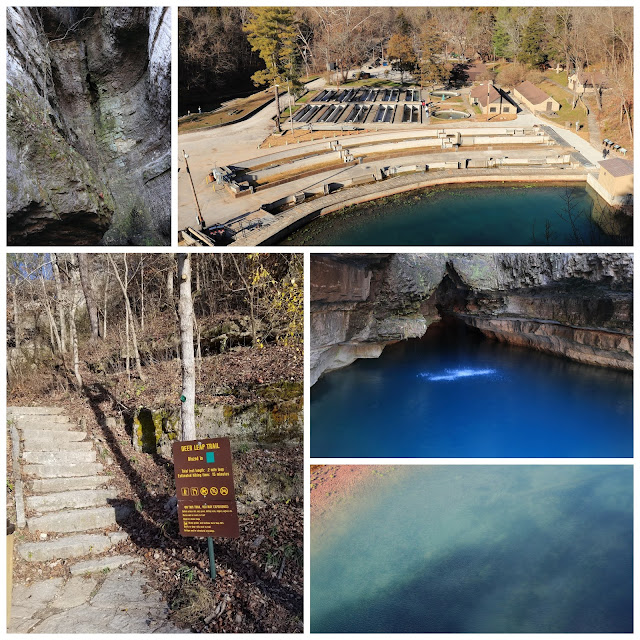Giving thanks in a different sort of way through Eureka Springs, by way of Bella Vista.
An alternate Thanksgiving found four of us heading south into Arkansas again, taking a dip in the more moderate temperatures hosted by the region. The first couple of stops of the day were not on the agenda, but a desire to stare at something besides asphalt encouraged a diversion to the biggest falls in the state of Missouri.
The late afternoon sun at Tanyard Creek Falls proved advantageous. A grand view of the feature appeared with little effort, along a trail mostly paved. Leaving said path, following the creek upstream from the bridge, a long cascade rushes along, carving a way for itself through the surrounding limestone bluffs. 150 meters later, it takes a hard right., choosing to leverage an old fault line in the rock.
On the other side of town, investigation of Mildred B Cooper Memorial Chapel kicked off the trek eastward towards accommodations for the evening. The architecture is similar to nearby Thorncrown Chapel, but arching supports, rather than diagonal, and equally as beautiful in its own way.
A torpedo interrupted the adventure briefly in Pea Ridge, standing as a monument remembering all of the submarine veterans who lost their lives serving in World War II. It seemed rather obscure so far inland, but appeared well-tended and cared for, aimed neatly at the local Intermediate school.
Eureka Springs arrived shuttered tight, though lit with holiday cheer. The Basin Park Hotel offered a Thanksgiving dinner from the balcony overlooking the namesake park, and our party ended the day satisfied. A cursory reconnoiter around town occupied the group briefly.
A few hours of lazy laughter and conversation by a warm fire on this chilly night posed a much more interesting proposition than lingering about an empty town. This is the first such discovery of such a feature at the sort of accommodations arranged for the evening and it topped things off nicely.
. . .
The next morning, after wandering the streets of downtown for a few hours, the the voyage homeward began with a brief tour of the Christ of the Ozarks statue atop Magnetic Mountain. The 20 meter sculpture of Jesus published in 1966 commands an excellent view of the valley below. They also host a replica of the East Gate in Jerusalem and biblical marketplace, but other more scientific inquires begged attention.
Onyx Cave appeared about 10 kilometres to the east. This oldest operating show in all of Arkansas does not really contain onyx. Instead it features a few moderately interesting displays of flowstone typical of most solution caves throughout much of the Ozarks. Many of the stalactites and other formations are damaged from the long history as a tour cave, but a few interesting bit remain here and there.
Turning back to the north and west, stumbling about karst formations in the open air rounded out the afternoon at Roaring River State. A few other random tourists milled about hiking and fishing the destination and we found the devil still had not cleaned up his mess in the kitchen.
Other random roadside amusements captured the attention of the crew until the sun slipped away into a cold winter evening on the road. Service stations from days gone by and the requisite fighter jet cruising low above the lawn of the local VFW are not all that unusual in this part of the world.
. . .
Further Reading
Grand Falls
RuralMissouri.org
RuralMissouri.org
Wildcat Glad Natural Area
Missouri Department of Conservation
Missouri Department of Conservation
Tanyard Loop
AllTrails.com
AllTrails.com
Mildred B. Cooper Chapel
CooperChapel.com
CooperChapel.com
Submarine Memorial Dedication At Pea Ridge
KFSM-TV Fort Smith
KFSM-TV Fort Smith
Pea Ridge School Historical Complex
Arkansas Historic Preservation Program
Arkansas Historic Preservation Program
The Christ of the Ozarks
GreatPassionPlay.org
GreatPassionPlay.org
Caves and Caverns
Encyclopedia of Arkansas
Encyclopedia of Arkansas



























































